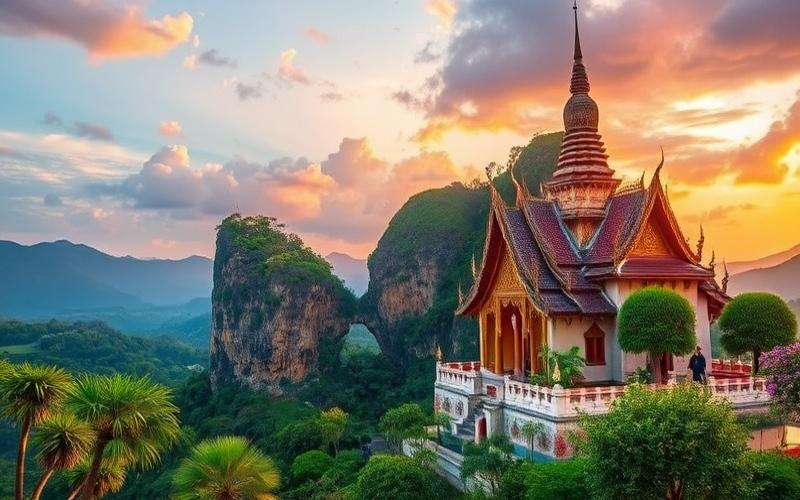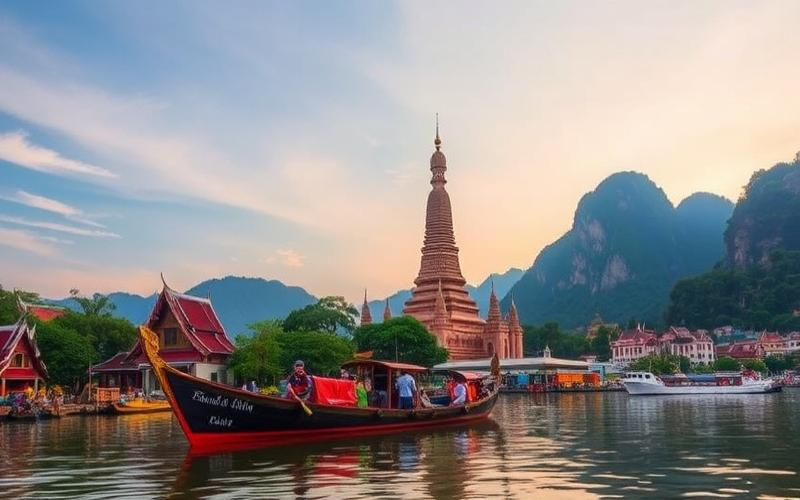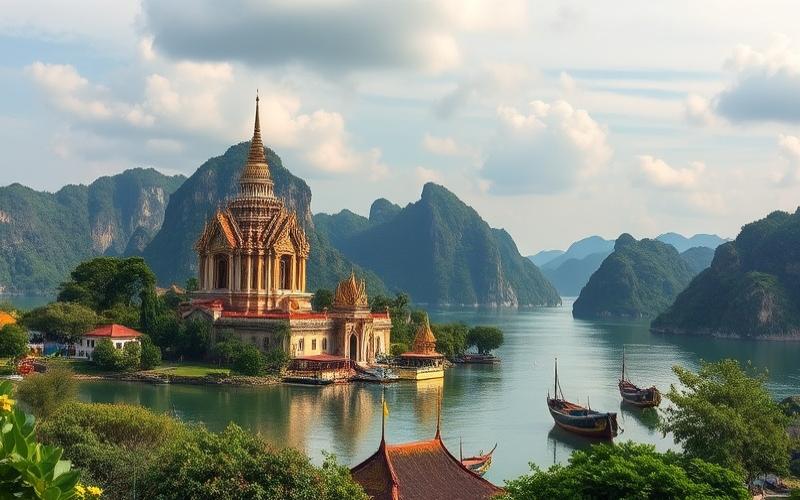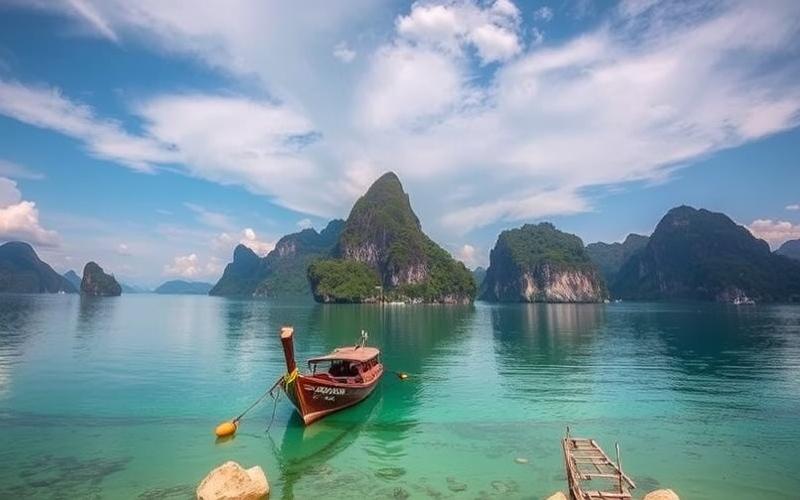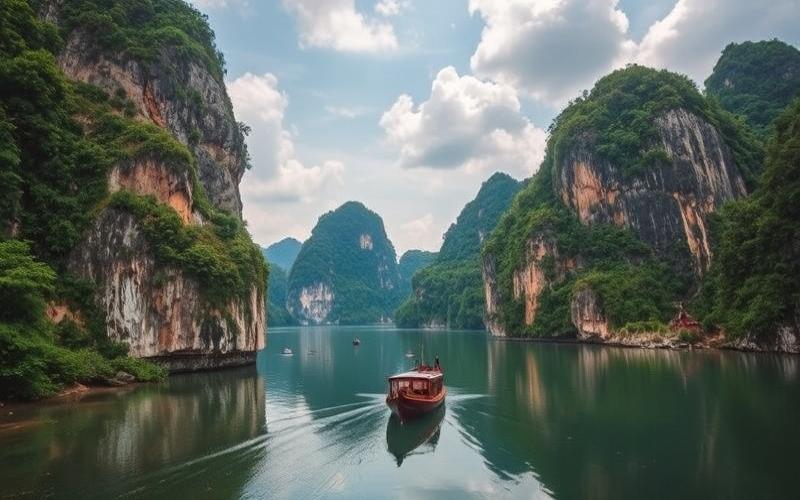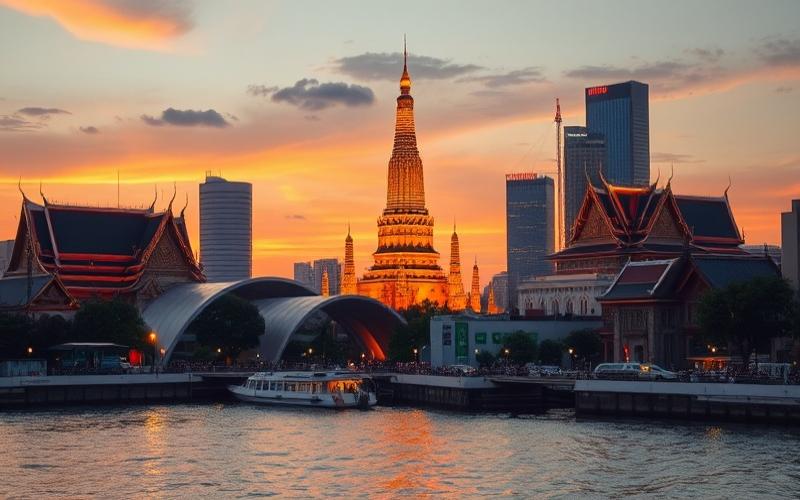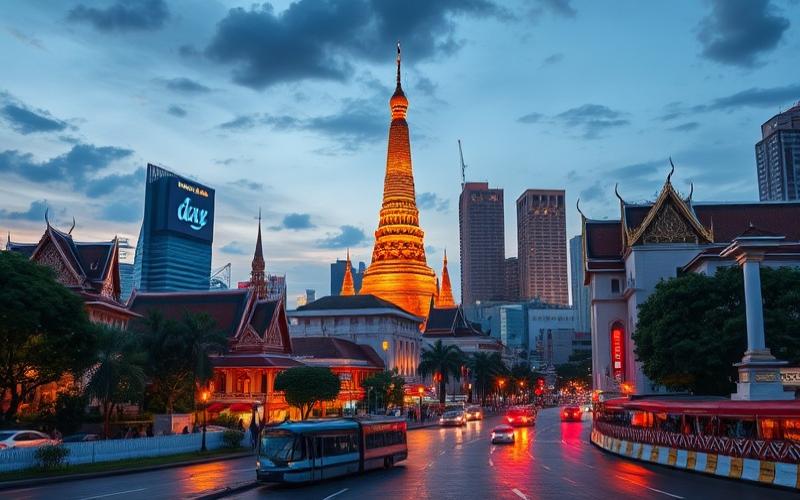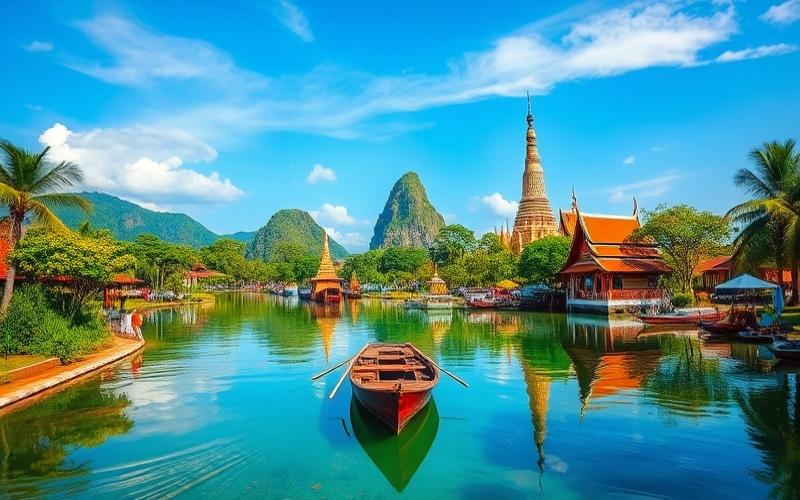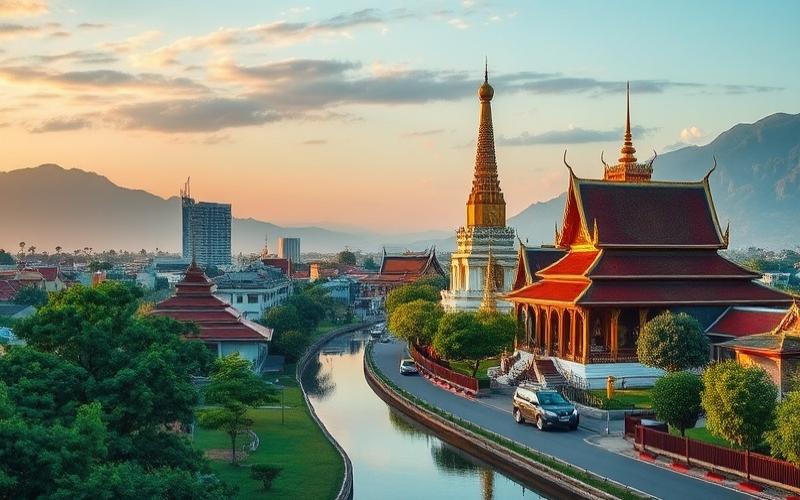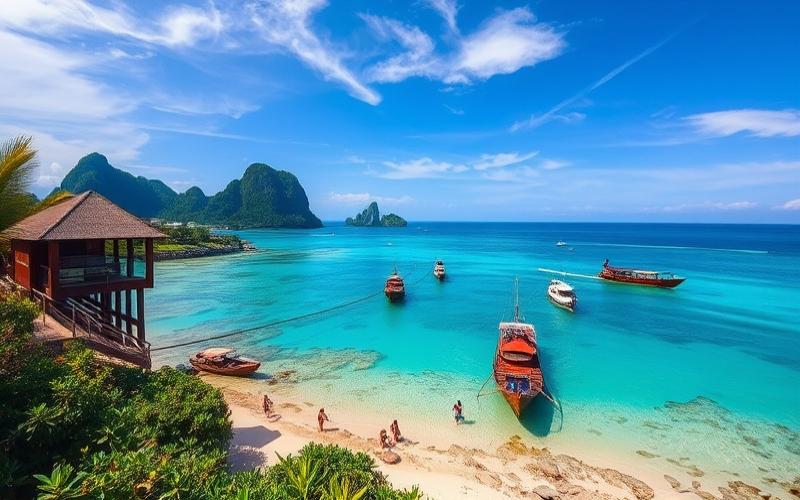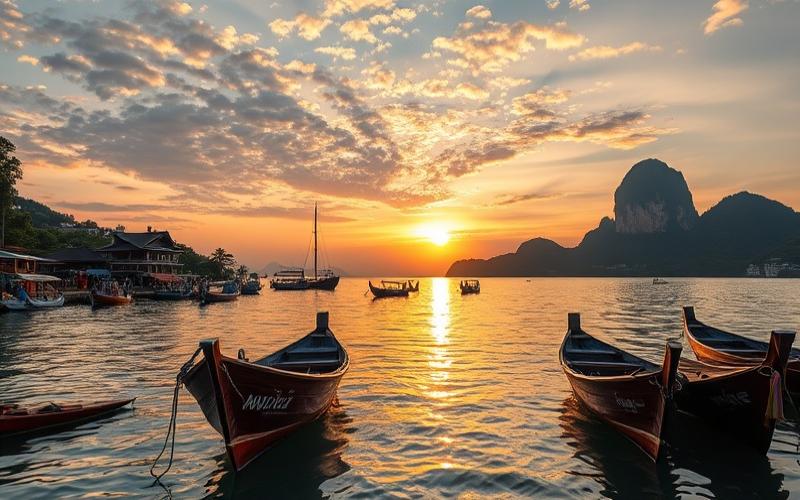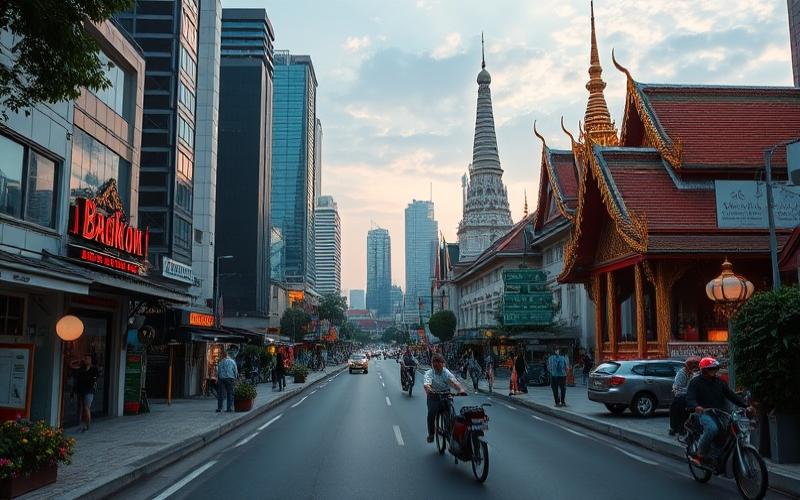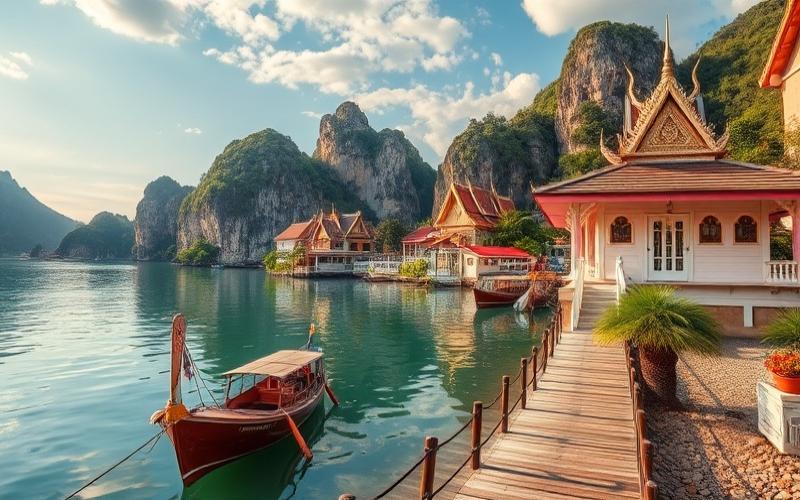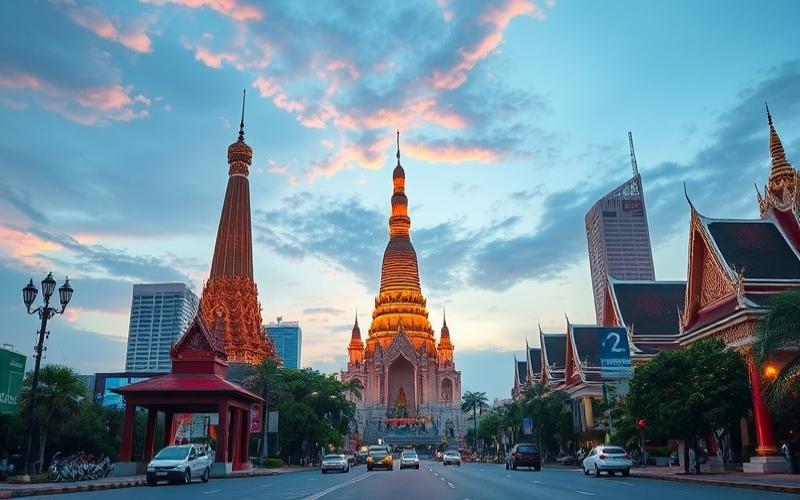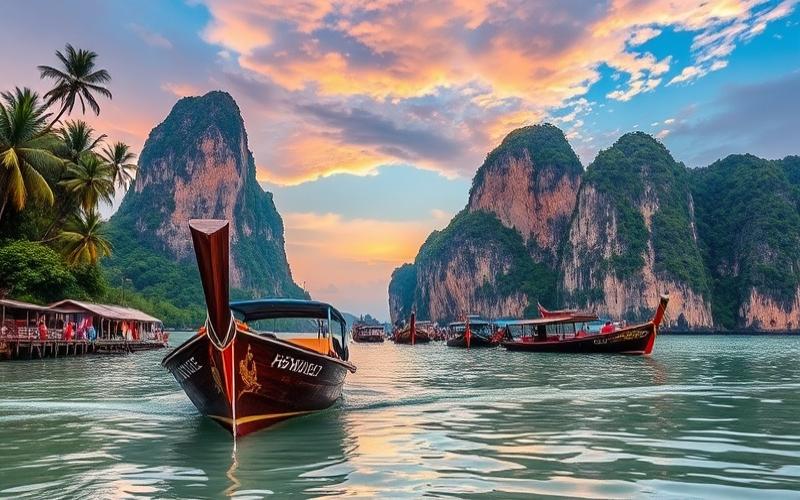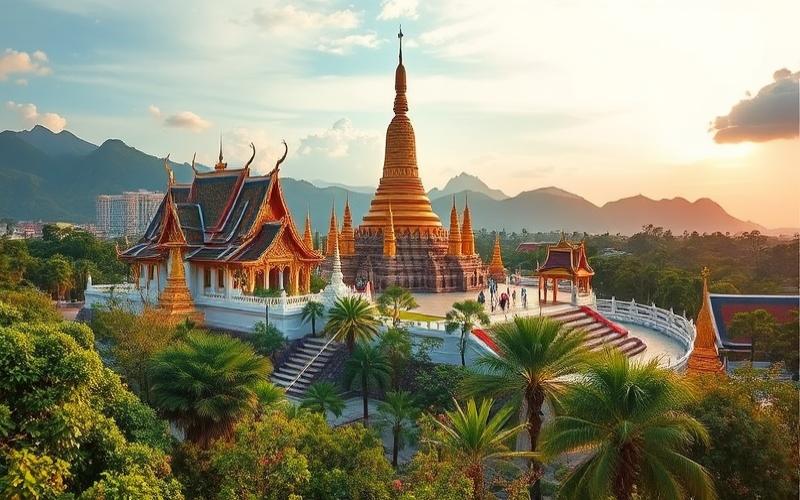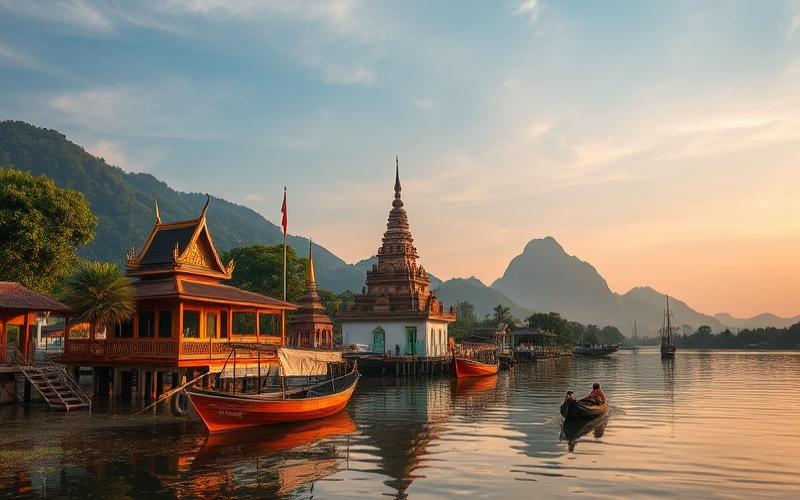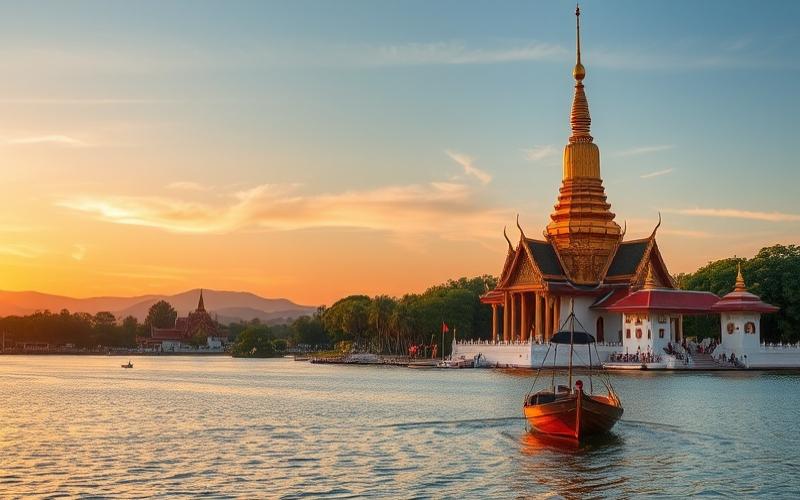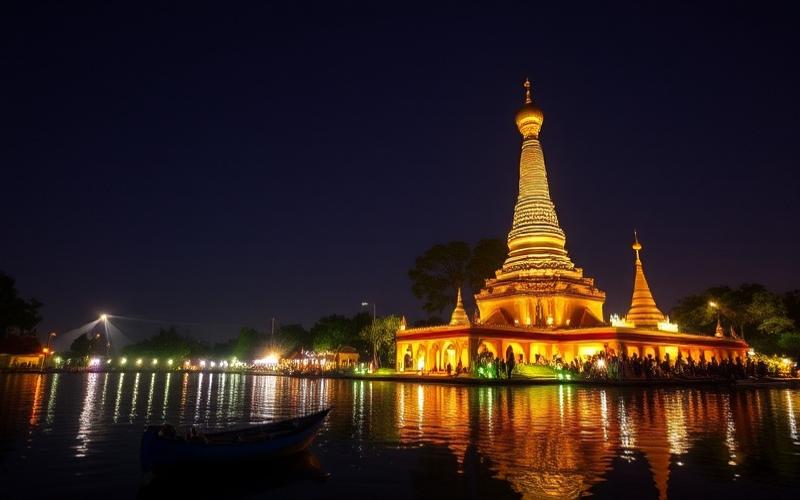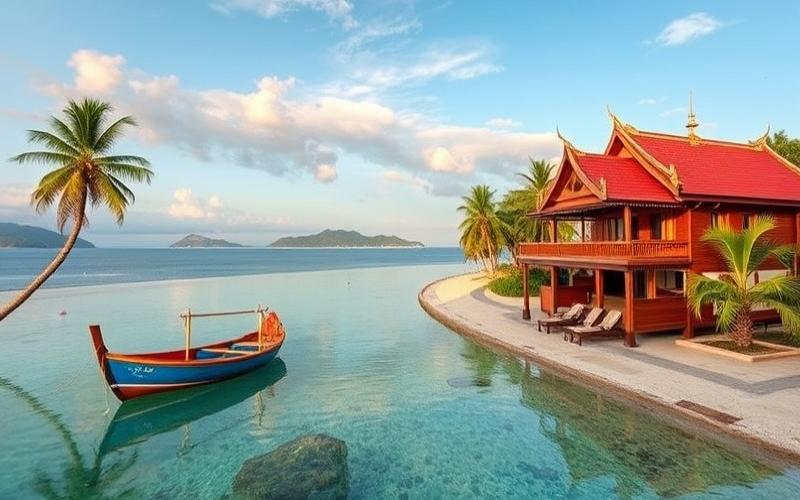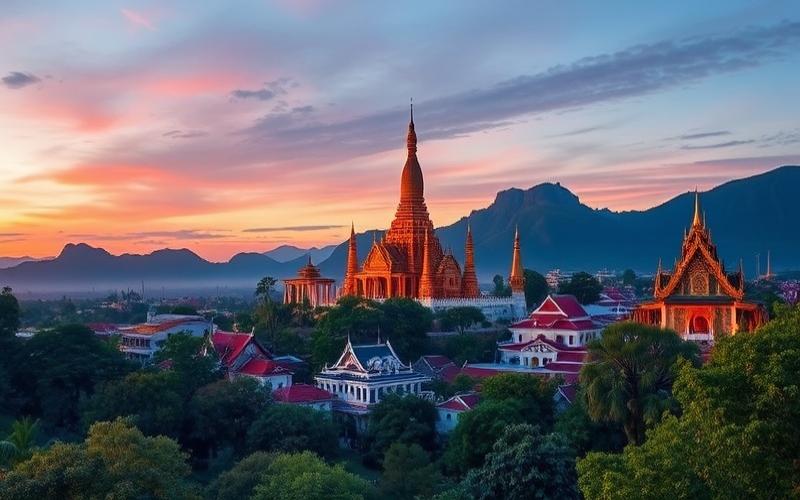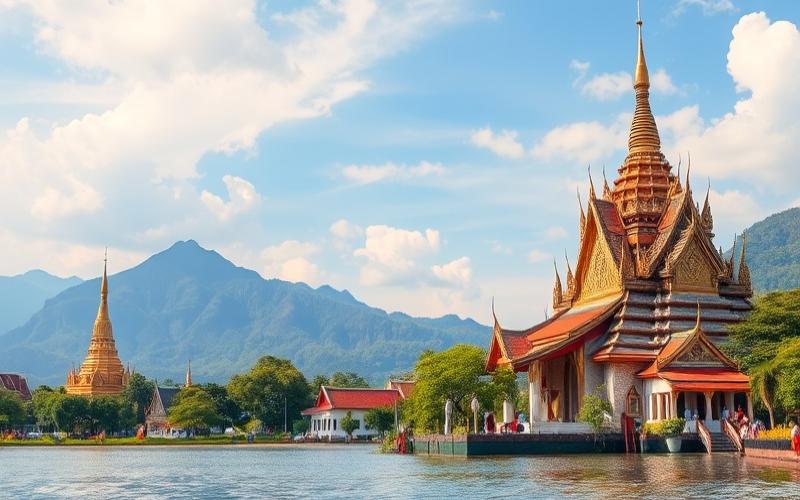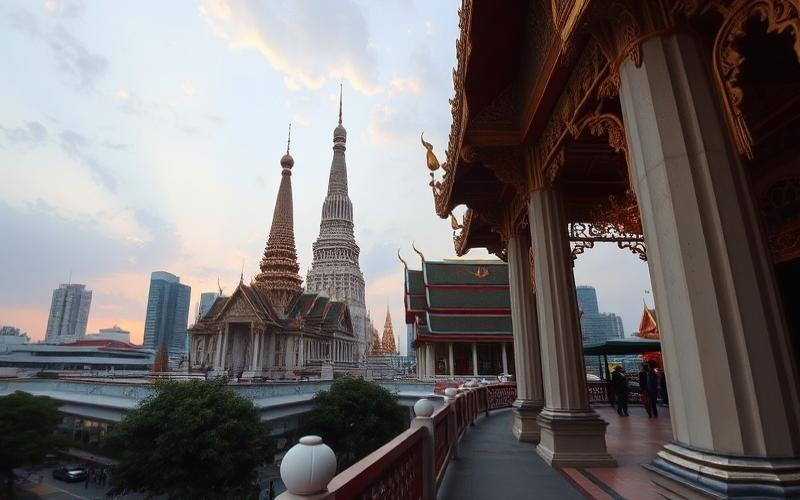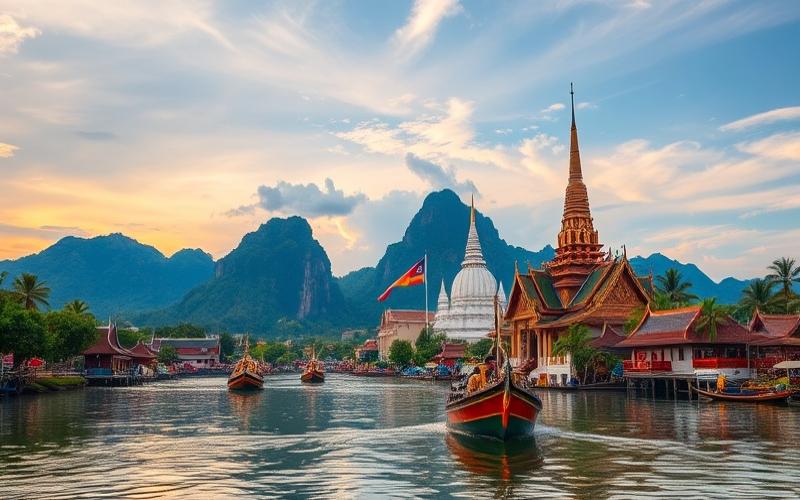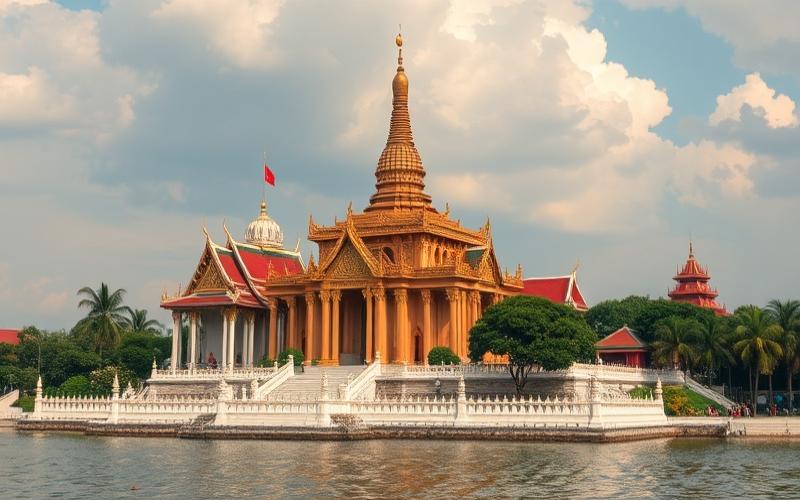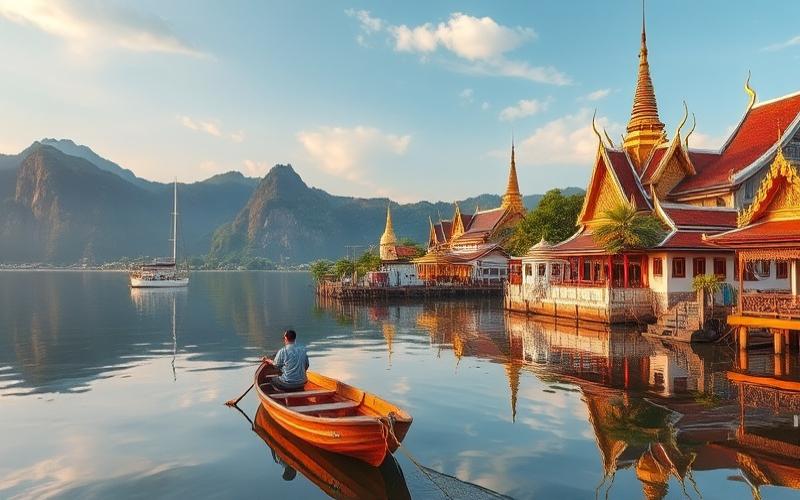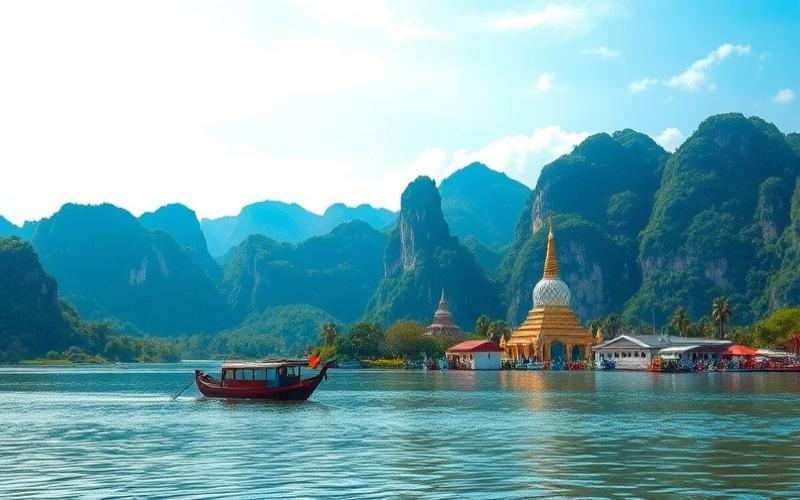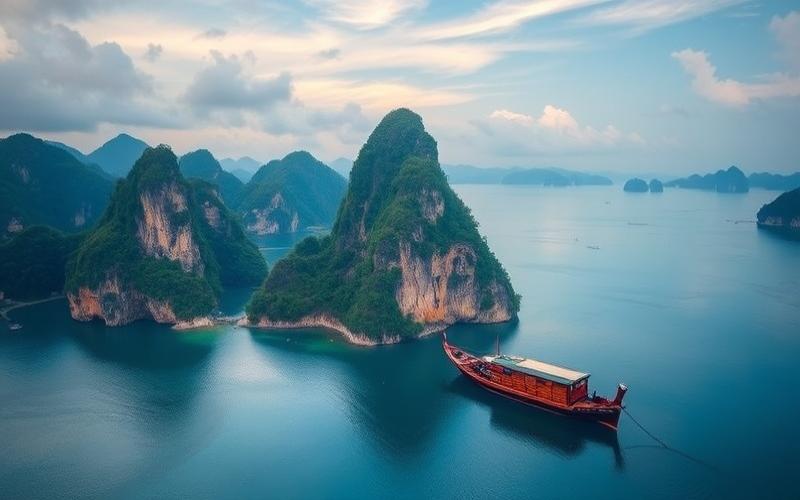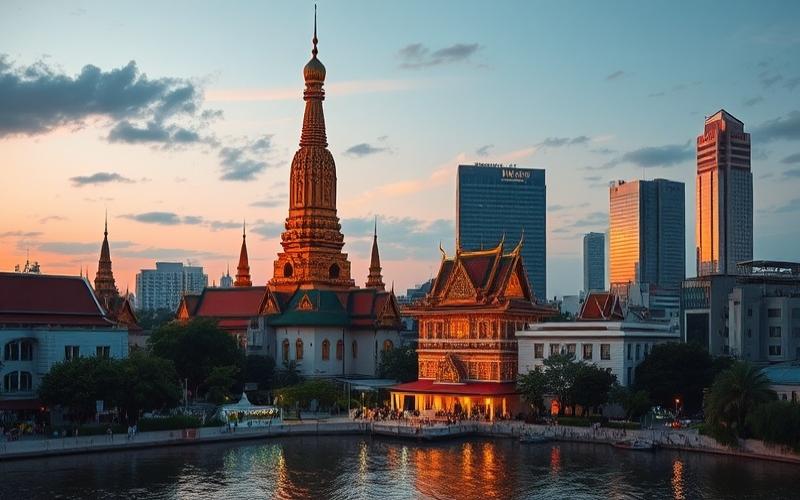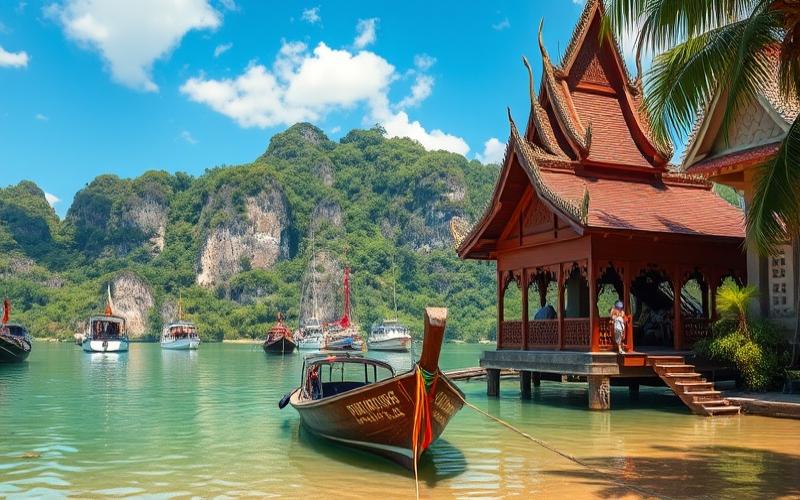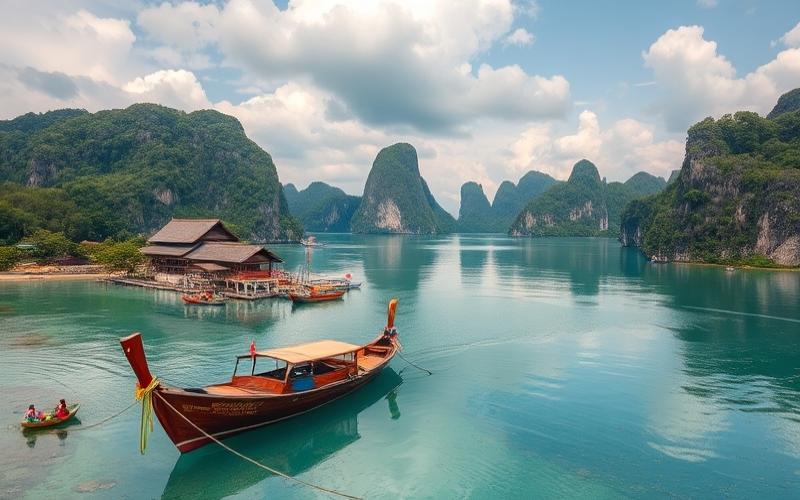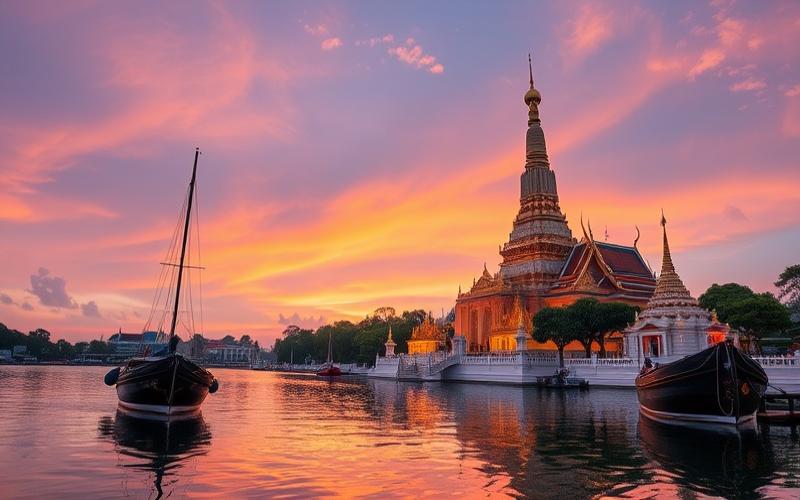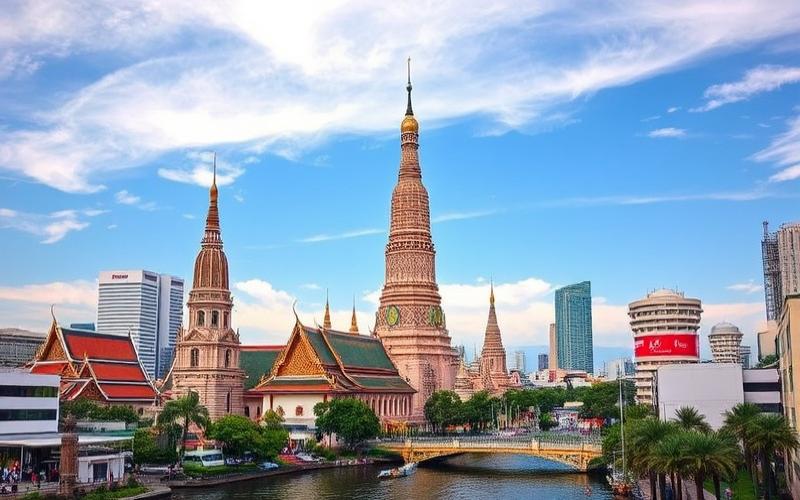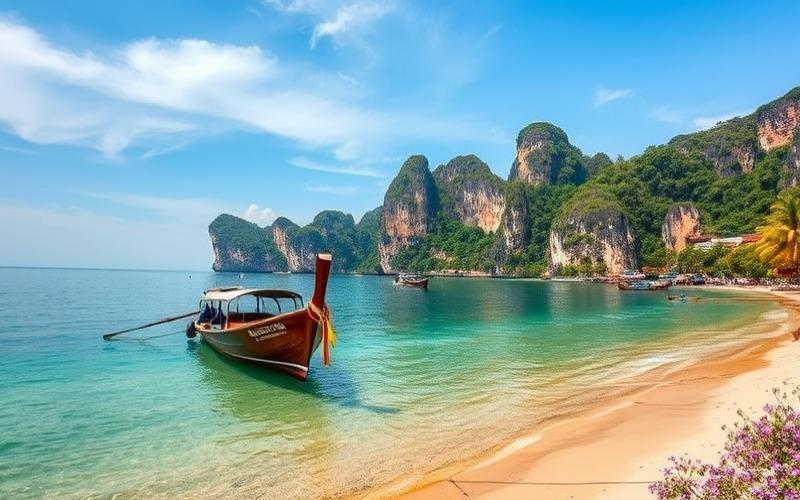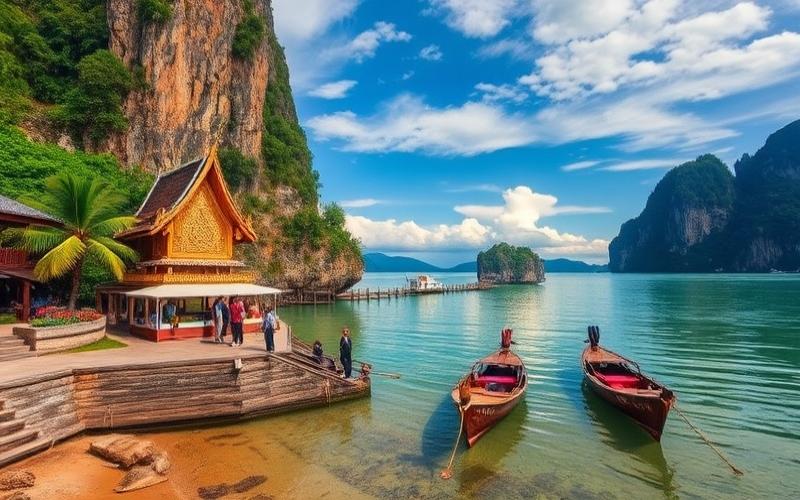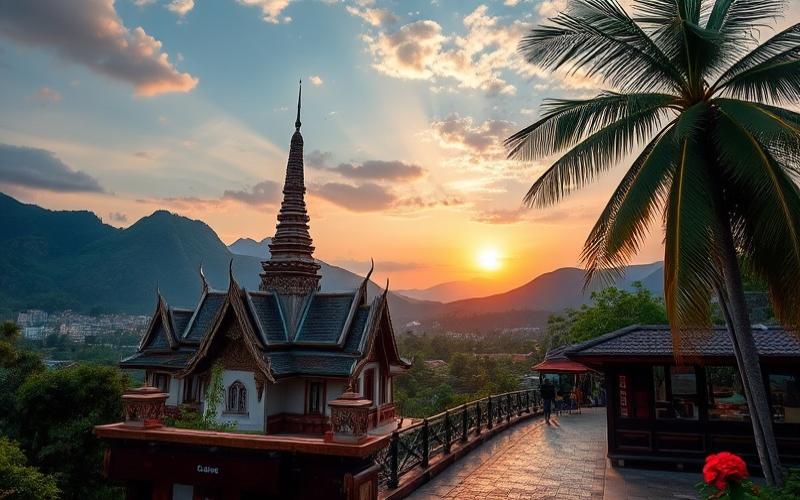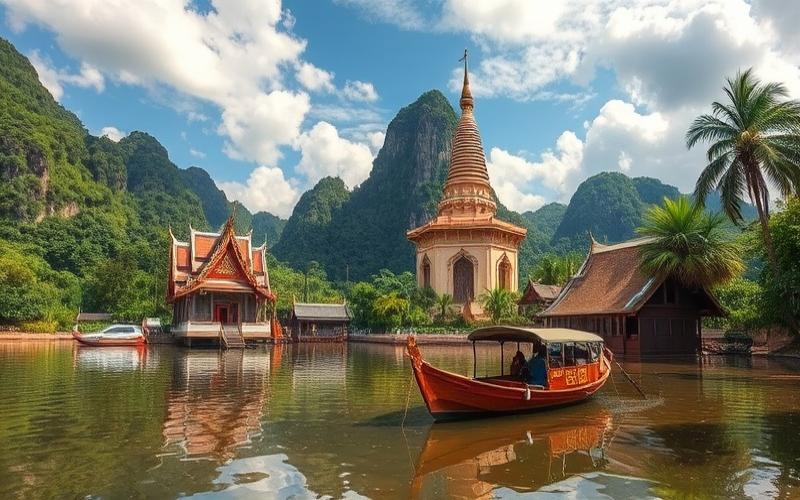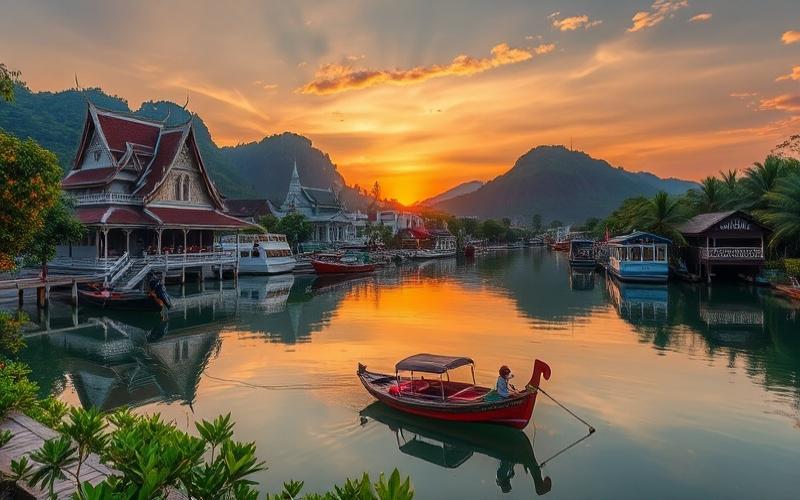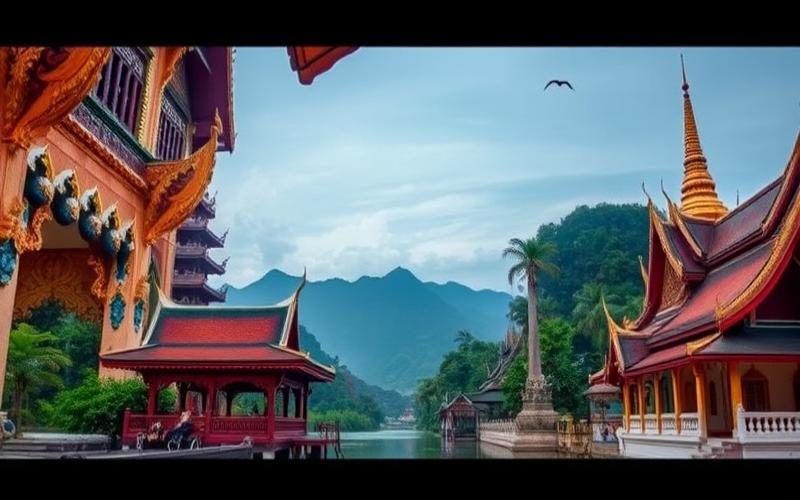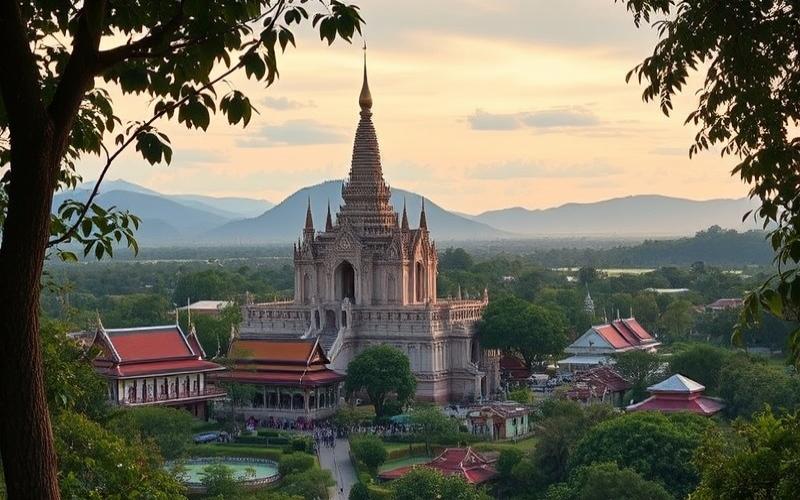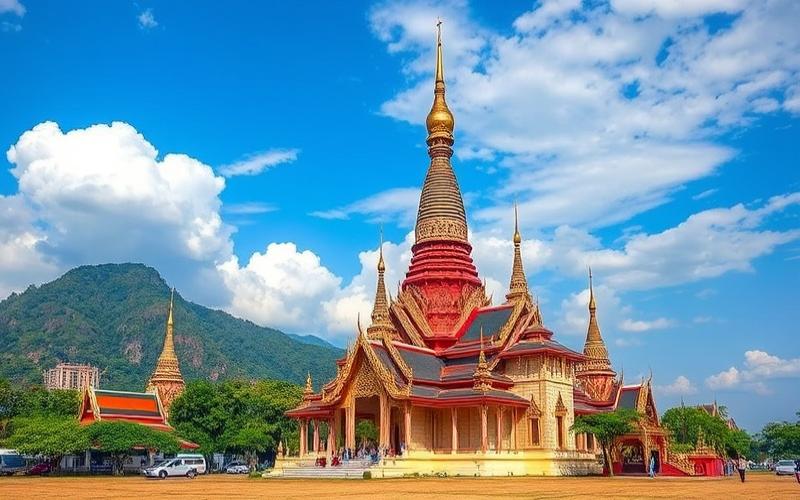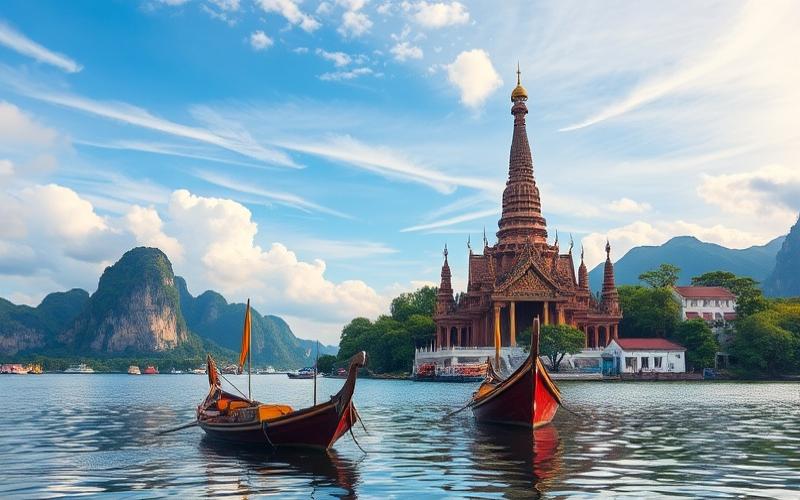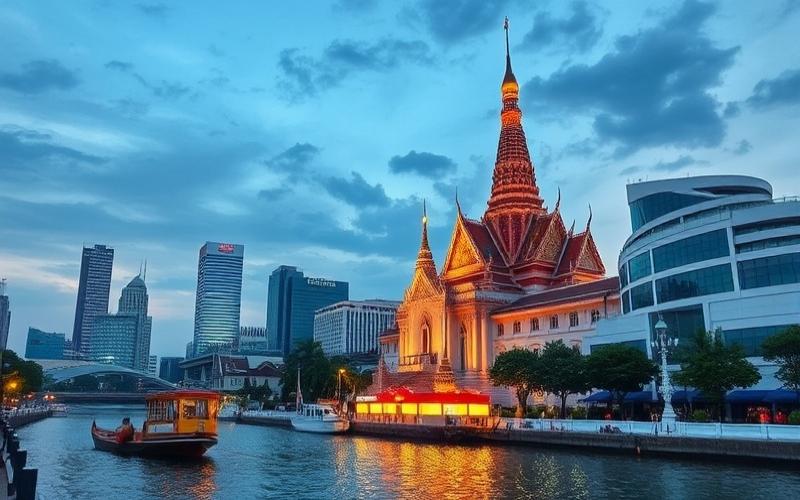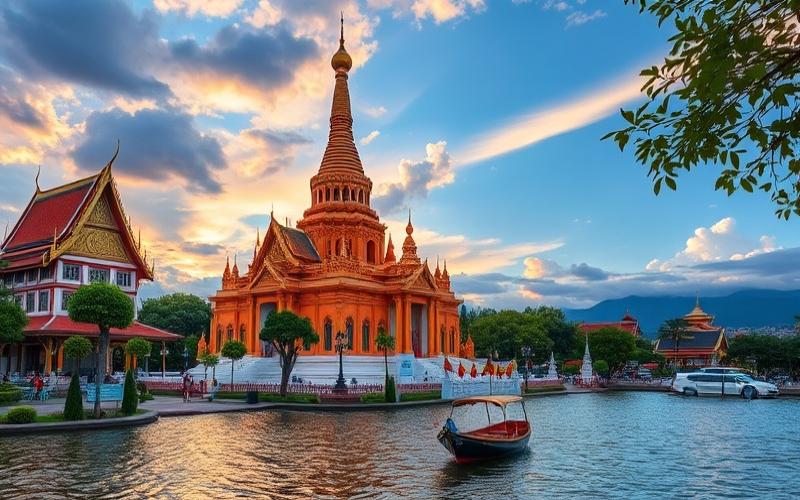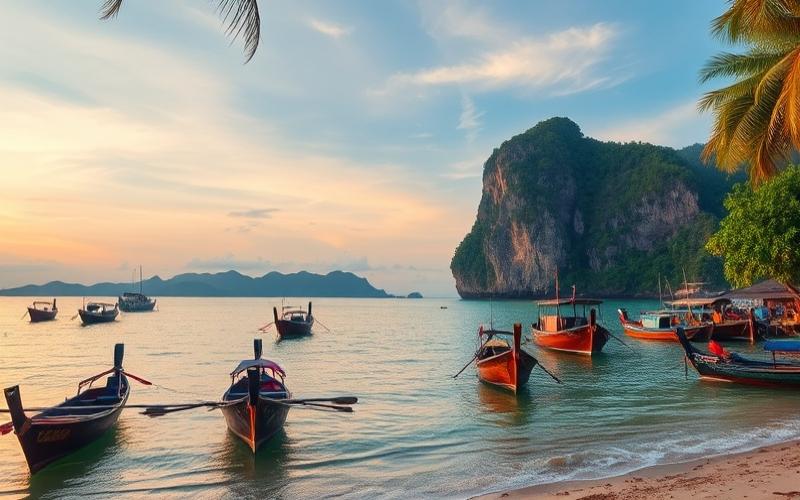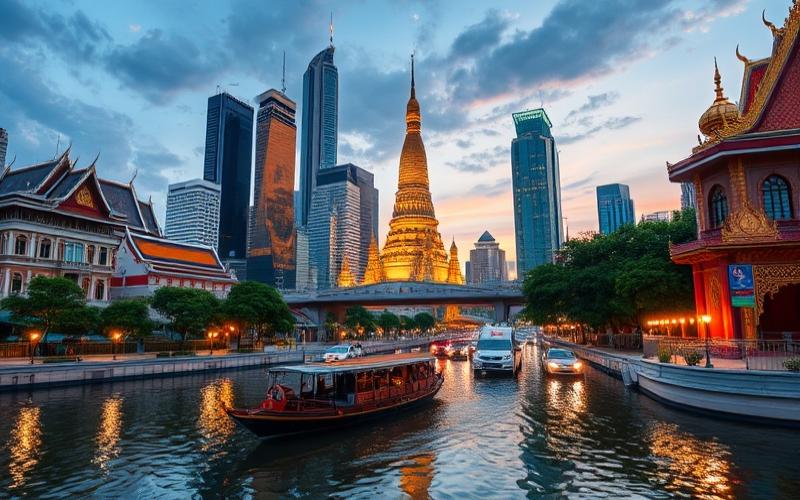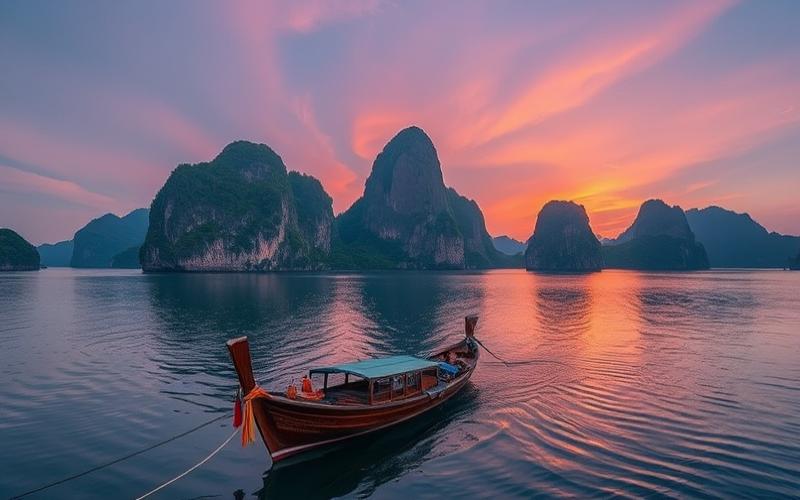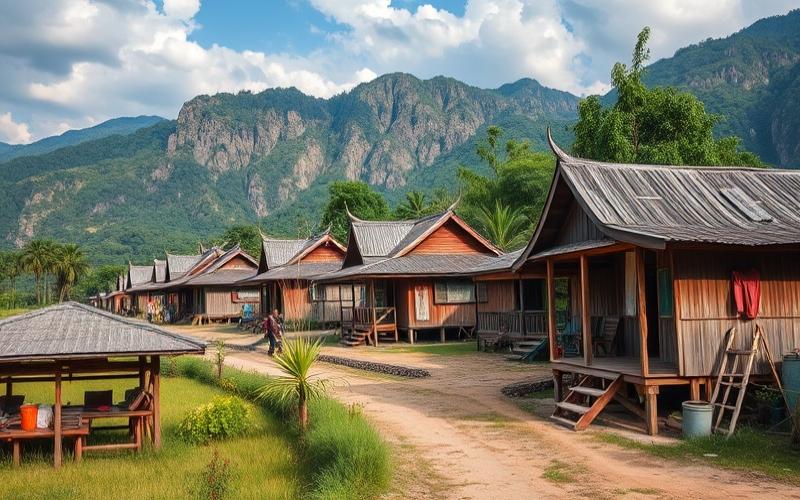
 Published on and written by Cyril Jarnias
Published on and written by Cyril Jarnias
In Thailand, picturesque villages are transforming into genuine creative hubs, attracting both art enthusiasts and investors seeking atypical returns. These unique places, where local craftsmanship meets artistic innovation, raise an intriguing question: are they primarily projects of cultural enhancement or do they mainly serve as new economically viable investment opportunities?
While the rise of these villages stimulates a dynamic local economy, it’s crucial to analyze whether their success relies on their ability to generate financial returns or to enrich Thailand’s cultural heritage.
The Rise of Artist Villages in Thailand
The rise of artist villages in Thailand originates from the country’s cultural history, marked by the importance of craftsmanship, spirituality, and Buddhism since founding kingdoms like Sukhothai and Lanna. This artistic tradition has continued through the centuries, but the emergence of structured artist villages is a more recent phenomenon, born from the intersection of preserving traditional arts, a desire for innovation, and openness to cultural tourism.
Development Factors of Artist Villages:
- Ancient artistic heritage: transmission of local know-how (ceramics, sculpture, painting, textiles).
- Growing tourist appeal: valuing authenticity and craftsmanship to meet visitor demand.
- Mobility of Thai and international artists drawn to collaborative creative spaces.
- Support from local authorities and cultural policies favoring heritage preservation.
- Private and community initiatives to revitalize rural villages through art.
Notable Examples of Artist Villages in Thailand
| Artist Village | Location | Distinctive Characteristics | Cultural and Economic Impact |
|---|---|---|---|
| Baan Kang Wat | Chiang Mai | Traditional architecture, open workshops, creative markets | Revival of local craftsmanship, intergenerational exchange space |
| Baan Tawai | Chiang Mai | Specialized in wood carving, gathering numerous artisans | International recognition, export of art objects |
| Chiang Khan Art Village | Loei (northeast) | Fusion of modern art and local traditions, galleries, murals | New tourist dynamic, heritage enhancement |
| Ban Chang Nak | Mae Rim (near Chiang Mai) | Wooden elephant sculpture workshop, knowledge transmission | Preservation of a threatened art, awareness of local wildlife |
Unique Characteristics and Innovations
- Combination of workshops, galleries, and artist residencies, fostering encounters between local and international artists.
- Organization of cultural events, exhibitions, and markets where the public can discover the creative process.
- Adaptation of traditional techniques to contemporary forms to reach new audiences.
- Educational projects and workshops for children and youth to ensure succession.
Preservation and Artistic Innovation
- Conservation of traditional arts (lacquer, batik, wood carving, ceramics, mural painting).
- Experimentation with new materials and artistic forms.
- Creation of artist and artisan networks, often with support from foundations or NGOs.
Cultural Policies and Location Choices
- Support from local authorities through grants, land provision, or tourism promotion.
- Selection of villages with high heritage potential or suffering from demographic decline, to reinject economic and social dynamism.
- Collaboration between Ministries of Culture, Tourism, and local communities to include these villages in national and international tourist circuits.
Economic Impact of Artist Villages
- Generation of direct income through sales of artworks, crafts, and event organization.
- Creation of local jobs (artisans, guides, restaurants, accommodations).
- Development of quality cultural tourism, less dependent on high season and mass tourism.
- Dual purpose: cultural investment (preservation, transmission, promotion of Thai art) and economic opportunity, as these villages become tourist and commercial hubs.
In Summary:
Artist villages in Thailand embody both a commitment to preserving traditional arts and a desire for innovation to adapt to contemporary challenges. They actively contribute to cultural vitality, international openness, and now serve as economic development levers for many rural communities.
Good to Know:
The rise of artist villages in Thailand stems from an effort to revitalize traditional arts, encouraged by proactive cultural policies. Places like Baan Kang Wat in Chiang Mai embody this trend by blending craft workshops, art galleries, and artist residencies, offering a platform for exchange between local and international creators. Baan Silapin in Bangkok, meanwhile, provides spaces for contemporary art while preserving cultural heritage with its performances and craft products. These villages are often located in regions benefiting from favorable local policies aimed at attracting tourists and stimulating the local economy. Thus, while these villages represent a cultural investment for artistic preservation, they also prove to be economically profitable, attracting a growing number of visitors and temporary residents who generate additional income for surrounding communities.
Creative Eco-Villages: A Sustainable Cultural Investment
A creative eco-village refers to a community based on the integration of artistic life, cultural preservation, and environmental sustainability. In Thailand, this concept emerged from the meeting of ecological initiatives (organic farming, permaculture) and spaces dedicated to artistic creation, often linked to local traditions and craft forms passed down through generations.
Implementation in Thailand:
- Creative eco-villages have found fertile ground in Thailand thanks to its rich traditional know-how and growing interest in ecotourism and community living.
- Projects like Suwan Organic Farmstay, Pun Pun, or the Panya Project combine permaculture, craft workshops, and cultural education, while actively involving residents and visitors.
Cultural and Environmental Benefits:
- Preservation of local arts through workshops, artist residencies, and intergenerational transmission.
- Promotion of traditional cuisine, yoga, meditation, ritual ceremonies, and festivals, which strengthen identity roots and intercultural exchange.
- Advancement of sustainable practices: organic farming, circular economy, low energy consumption, responsible water and waste management.
- Direct support to the local economy through craft activities and responsible ecotourism.
Techniques and Methods to Minimize Environmental Impact:
- Construction of eco-friendly housing (bungalows from natural materials, green roofs).
- Use of solar energy and rainwater harvesting systems.
- Implementation of permaculture, composting, and conservation of indigenous seeds.
- Resource sharing and organization of community gardens or food forests.
Why a Sustainable Cultural Investment?
These villages go beyond classic commercial logic by positioning themselves as hubs of social innovation, cultural transmission, and ecological experimentation.
They provide a sustainable framework for artistic creation and safeguarding traditions, while raising awareness among new generations about sustainability.
Their impact extends far beyond immediate profitability: they create resilient social fabric and transmit values that enrich society in the long term.
Concrete Examples in Thailand:
| Village Name | Location | Artistic and Ecological Features | Testimonial or Quote |
|---|---|---|---|
| Suwan Organic Farmstay | Central Thailand | Craft workshops, organic farming, cultural immersion | “Here, every activity is a way to pass on our love for the land and culture to our children.” |
| Pun Pun | Northern Thailand | Seed conservation, natural building, creative workshops | “By living sustainably, we can inspire others to reconnect with nature and creativity.” |
| Panya Project | Northern Thailand | Permaculture, artist residencies, environmental education | “Our community proves that art and ecology can transform collective life.” |
Techniques and Methods Used:
- Participatory workshops open to visitors and children (planting, sculpture, painting, cooking).
- Systems for exchanging and transmitting knowledge between local and international artists.
- Organization of festivals, craft markets, collective exhibitions.
Reproducibility of the Model Internationally:
- The Thai experience shows that the success of these villages depends on:
- Active involvement of residents.
- Respect and promotion of local traditions.
- Integration of a strong educational and community dimension.
- This model can inspire other countries wishing to reconcile cultural development, responsible tourism, and ecological resilience.
Creative eco-villages in Thailand embody a form of sustainable cultural investment, where art, nature, and community life mutually reinforce each other to build an inspiring and reproducible future.
Good to Know:
Creative eco-villages in Thailand, such as those in Chiang Rai or Pai, combine art, local culture, and environmental sustainability. Involving communities of artists and artisans, these villages emerge as cultural oases, preserving local traditions while integrating ecological practices, like building with natural materials and responsible resource management. They provide an environment conducive to community living, focused on sharing and creativity, where methods such as recycling and organic farming minimize ecological impact. This model attracts not only artists but also tourists, contributing to sustainable development and encouraging cultural exchange that goes beyond mere profitability. Testimonials from local artists, such as those from Ban Pong eco-village, highlight the importance of this long-term cultural investment, with potential to inspire other countries wishing to combine art and sustainability.
The Impact of the Artistic Community on the Thai Real Estate Market
Since the 2000s, the emergence of artist villages in Thailand, particularly in Chiang Mai with places like Baan Kang Wat or San Kamphaeng, has profoundly transformed the local cultural and real estate landscape. These artistic communities, driven by contemporary artists and artisans, have revitalized formerly rural or undervalued areas, attracting both tourists and investors.
Main Effects on Property Demand and Prices:
- Increased real estate demand: The arrival of artists and the transformation of old neighborhoods into creative spaces have made these areas attractive to buyers seeking an original and dynamic living environment.
- Land value appreciation: Property prices in these villages have seen a notable increase, driven by tourist enthusiasm and the development of businesses (galleries, cafes, workshops).
- Diversification of offerings: Many local owners have converted their homes into galleries, cafes, or charming accommodations, thereby increasing rental value.
Revitalization Mechanisms and Tourist Transformation:
- Creation of a destination: The fame of artist villages (e.g., Baan Kang Wat) has made these neighborhoods must-visit stops for visitors seeking authenticity and creative experiences.
- Private and public investments: The presence of an artistic community stimulates the opening of hotels, shops, and cultural events (night markets, art festivals), generating a virtuous cycle of investments.
- Impact on tourism: These villages become alternative tourist hubs to the city, promoting the discovery of local culture and consumption of craft products.
Testimonials from Professionals and Local Artists:
| Testimonial | Role | Statement |
|---|---|---|
| Somchai, real estate agent in Chiang Mai | Real Estate | “Since artists arrived at Baan Kang Wat, demand for properties in the area has doubled, and prices have increased by about 30% in five years.” |
| Ploy, ceramic artist at Baan Kang Wat | Artist | “The village has created a real community. Our sales have grown thanks to tourist clientele, and workshops attract enthusiasts from around the world.” |
| Anong, gallery owner | Art Gallery | “The blend of tradition and creativity attracts not only buyers but also investors looking to open cafes or shops.” |
Economic and Cultural Advantages:
- Creation of local jobs (workshops, galleries, restaurants)
- Preservation and reinvention of traditional know-how
- Strengthening of social fabric and intercultural exchange
- Revitalization of the real estate market and local commerce
International Comparison:
| Country | Examples of Artistic Communities | Effects on Real Estate Market |
|---|---|---|
| Thailand | Baan Kang Wat, San Kamphaeng | Price increases, tourist influx, diversification of real estate offerings |
| France | Montmartre (Paris), Barbizon | Transformation into sought-after neighborhoods, price increases, gentrification |
| United States | SoHo (New York), Wynwood (Miami) | Explosion in property values, international appeal, creation of tourist hubs |
| Germany | Kreuzberg (Berlin) | Urban rehabilitation, growth of alternative spaces, arrival of investors |
Common Trends:
- Attraction of investments in real estate and tourism
- Price increases and sometimes gentrification
- Cultural enhancement and international recognition
Thai artist villages thus follow a trajectory comparable to that observed in other countries, where creativity becomes a powerful driver of local, economic, and tourist development.
Good to Know:
In Thailand, artist villages have emerged over recent decades, transforming previously overlooked regions into cultural and tourist attractions, which has a notable impact on the real estate market. In Chiang Mai, for example, the establishment of artistic communities has revitalized entire neighborhoods, increasing demand and driving up property prices. Real estate professionals note an influx of investments due to the “artistic revitalization” effect, similar to what has been observed in countries like Germany or Italy. Local artists report not only economic growth but also cultural enrichment, attracting crowds of curious tourists and buyers seeking unique residences. This phenomenon shows that the presence of artists in these areas offers benefits in terms of quality of life and economic dynamism, providing lasting advantages for both local communities and the real estate market.
Disclaimer: The information provided on this website is for informational purposes only and does not constitute financial, legal, or professional advice. We encourage you to consult qualified experts before making any investment, real estate, or expatriation decisions. Although we strive to maintain up-to-date and accurate information, we do not guarantee the completeness, accuracy, or timeliness of the proposed content. As investment and expatriation involve risks, we disclaim any liability for potential losses or damages arising from the use of this site. Your use of this site confirms your acceptance of these terms and your understanding of the associated risks.

